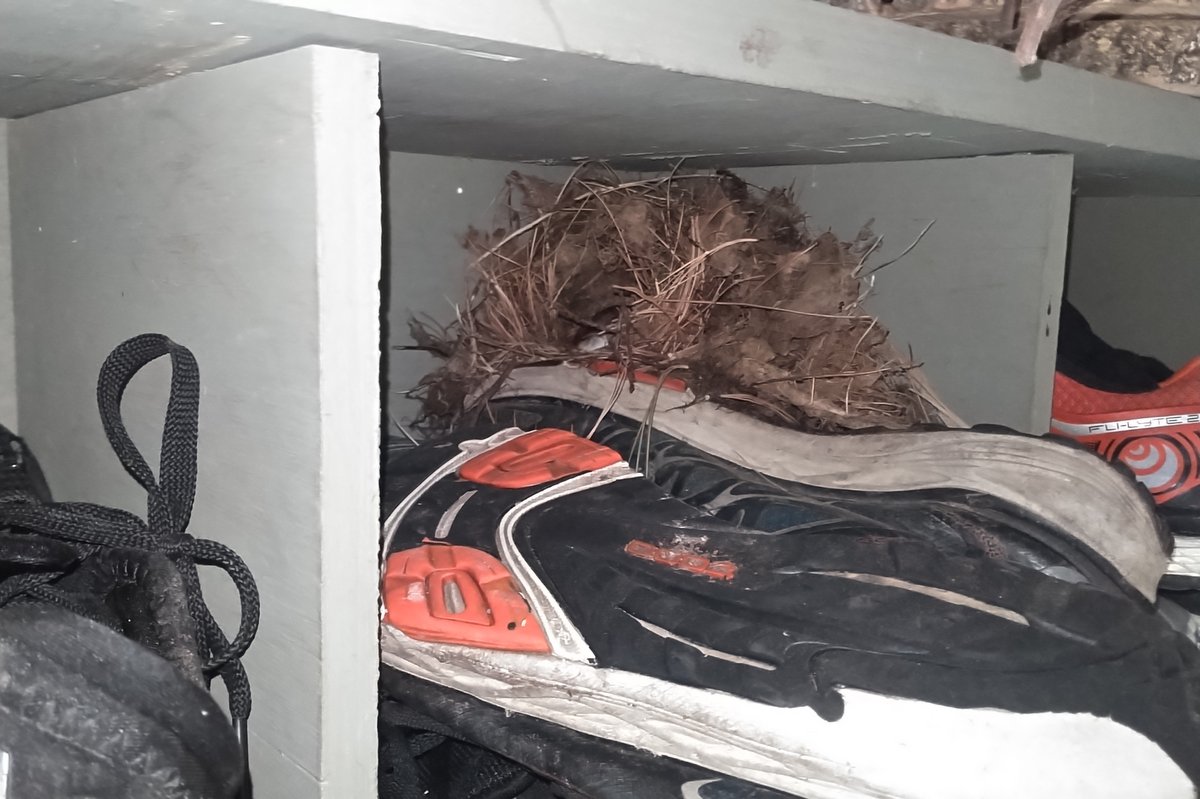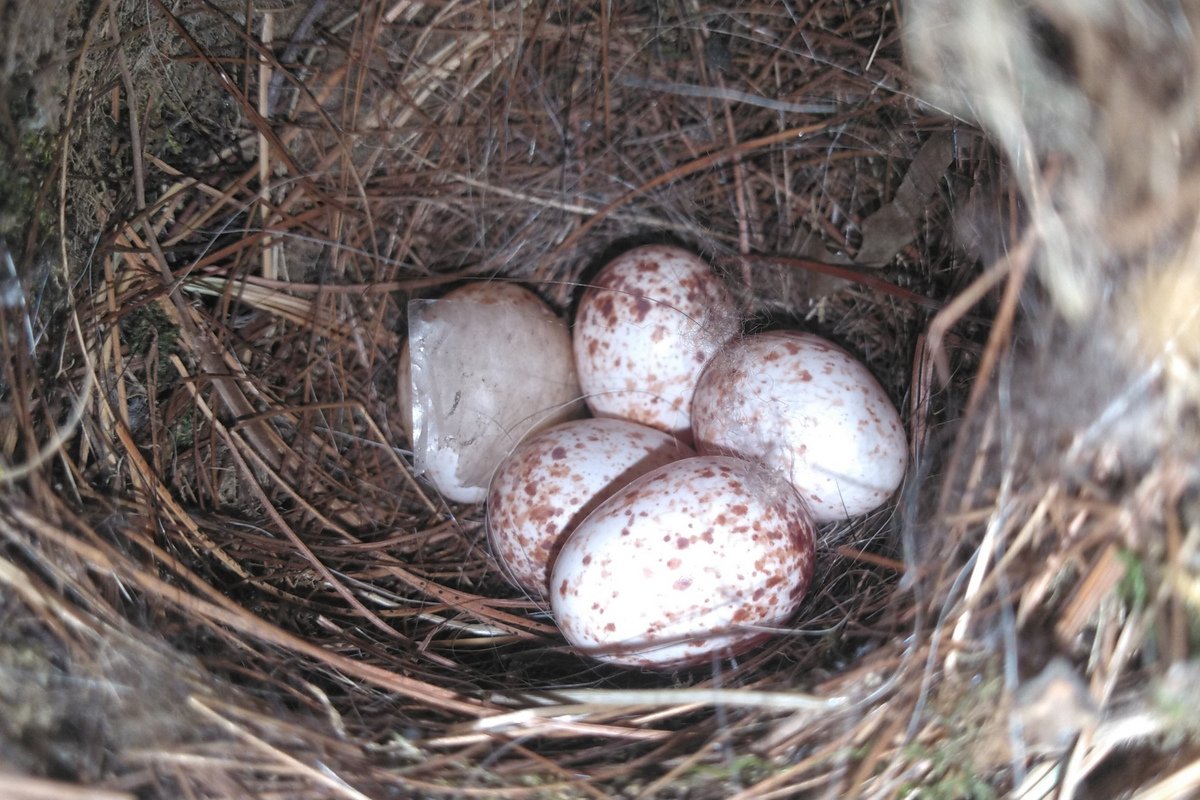Multiple nests in birds
A few years ago I enclosed my front porch and built some cubbies to store my running shoes. It wasn’t long after that the Carolina wrens discovered the cubbies and started building their nests tucked away in my shoes. This happened three years in a row, but the nests never had any eggs in them. While my shoes don’t smell particularly nice, wrens don’t have a well-developed sense of smell and don’t seem to respond much to the scent of predators (and I don’t think my shoes smell any worse than mink urine and feces: source). The behavior always struck me as odd – why go through all that trouble and put in such a big investment of energy to build a nest and not even use it? Here we look at some of the adaptive reasons a bird might build multiple nests.
Nest building
Carolina wrens appear to be monogamous, breeding with a single mate across multiple breeding seasons. During courtship, the male begins to build multiple nests at different sites while staking out his territory with high, whistly “Teaketttle Teakettle Teakettle” calls. This year, as in previous years, the wren in my yard started building nests at two different sites (at least I could only locate two different sites): the cubbies on my front porch and a nest box in the backyard. In each of the past five years, one of the two sites is always abandoned around the time the female lays her eggs. For the first three years they chose the bird house, while this year and last they opted for the cubbies.
Why build multiple nests
While it’s not common a pattern across all bird species, a few species build multiple nests during the breeding season while only making use of one (e.g. wrens, reed warblers, and even black sparrowhawks). Many hypotheses have been put forward to explain multiple nest building behaviors, but three seem to be the most likely:
- attract a mate
- reduce predation
- avoid competition/parasitism
Which of the three hypotheses applies most to a species depends largely on its breeding strategy.
Attracting a mate
It is possible that a female Carolina wren would choose a male based on the quality of the nest site the male has selected. Red-winged blackbird females, for example, choose mates based on the quality of the habitat the males defend. For wrens, producing multiple nests would give a greater likelihood that the male has found a site that a female will find suitable.
In reed warblers, males build two distinctly different types of nests. The females only raise young in Type I nests and Type II nests aren’t constructed after the female lays her eggs, so the nests only play a role in advertising a male’s fitness (source).
Reducing predation
In the polygynous (one male will mate with multiple females) marsh wren, multiple males will build nests in a breeding area. Each male builds multiple nests and males will even continue to build “dummy” nests even after the females begin to incubate the eggs (source), making these breeding grounds a tangle of mostly abandoned nests. I could imagine a nest predator becoming increasingly frustrated after searching multiple nests and coming up empty (marsh and Carolina wren nests are deep cavities that take more than a passing glance to explore and see if they’re occupied).
Avoiding competition/reducing parasitism
Egyptian geese aren’t great nest builders, in fact they’re aren’t nest builders at all and typically lay their eggs right on the ground. Occasionally, however, they will harass and usurp nests sites from other birds, like black sparrowhawks (a large accipiter that nests throughout Africa). In areas where sparrowhawks had to contend with the geese, their reproductive success was cut in half (source). By building multiple nests at the same time, black sparrowhawks have an alternative path to raising their young if they’re bullied out of a nest by a goose.
One more hypothesis (and the best one)
So here we are, as is often the case, without a clear reason behind why Carolina wrens in particular might build multiple nests. Marsh wrens, a close relative of the Carolina wren, build multiple nests to attract a mate. But they’re polygynous, while Carolina wrens are monogamous. It seems less likely that a Carolina wren would need to attract the same mate year after unlike that site selection would have any bearing on mate selection.
One interesting peculiarity of Carolina wrens is that some female Carolina wrens lay their eggs in the nests of other Carolina wrens (source)!! It seems possible then that by staking out multiple nests sites, a bonded pair might avoid the energetic costs of having to rear another Carolina wren’s young.





